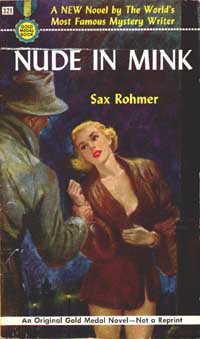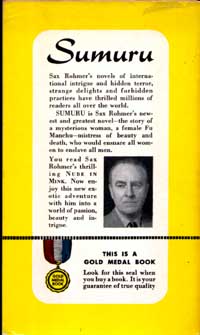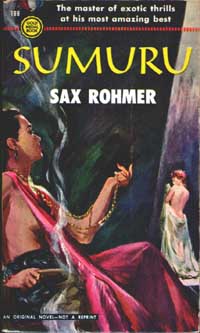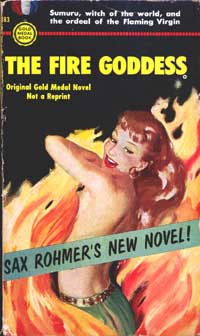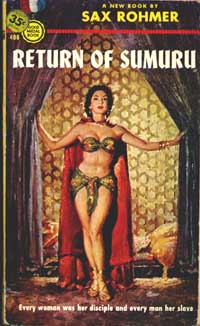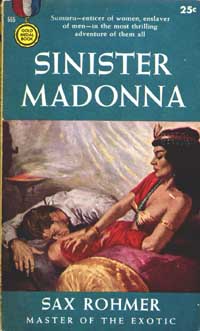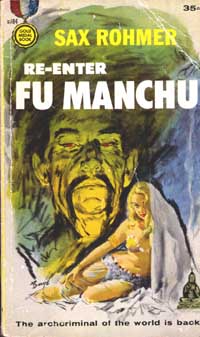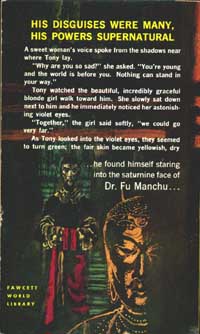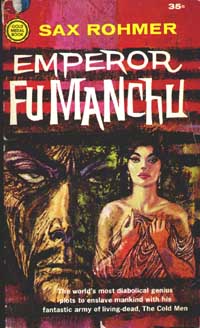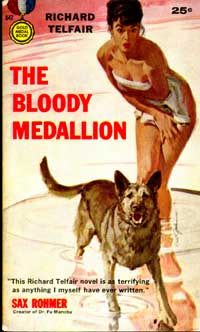|
|
1950 Nude
In Mink. Greenwich, Connecticut: Fawcett - Gold Medal original. First printing, May, 1950, 105 Second printing, May, 1950, 105 Third printing, June, 1950, 105 Fourth printing, Oct., 1950, 105 Fifth printing October, 1951, 105 Sixth printing, July, 1953, 321
Artist: Not credited
The sixth printing is pictured; the first may be seen on The Page of
Sumuru. The only discernable differences are the "105" vs. the "321"
and the addition of the white blurb bar. The spine on the left is from the "105"
first edition. |
|
1951 Sumuru. Greenwich,
Connecticut: Fawcett - Gold Medal original 199. |
|
|
| 1952 The Fire Goddess. Greenwich,
Connecticut:: Fawcett - Gold Medal original 283. December, 1952
Artist: Not credited |
|
|
| 1954 Return of Sumuru.
Greenwich, Connecticut:: Fawcett - Gold Medal original 408. First printing, June, 1954 Second printing, March, 1959 868
Artist: James Meese |
|
|
1956 Sinister Madonna.
Greenwich, Connecticut: Fawcett - Gold Medal original 555. February, 1956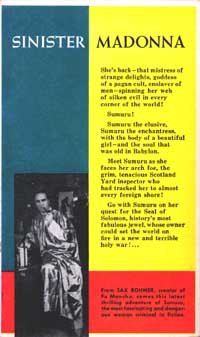 |
Artist: Charles Binger
|
|
| 1957 Re-Enter Fu Manchu.
Greenwich, Connecticut: Fawcett - Gold Medal original s684 First printing, July, 1957 Second printing, no month indicated, 1957 k1458 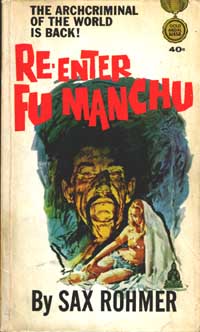 |
Artist: Barye Phillips First Printing
|
|
|
||
| 1959 Emperor Fu Manchu.
Greenwich, Connecticut:: Fawcett - Gold Medal original s929 October, 195 |
|
|
